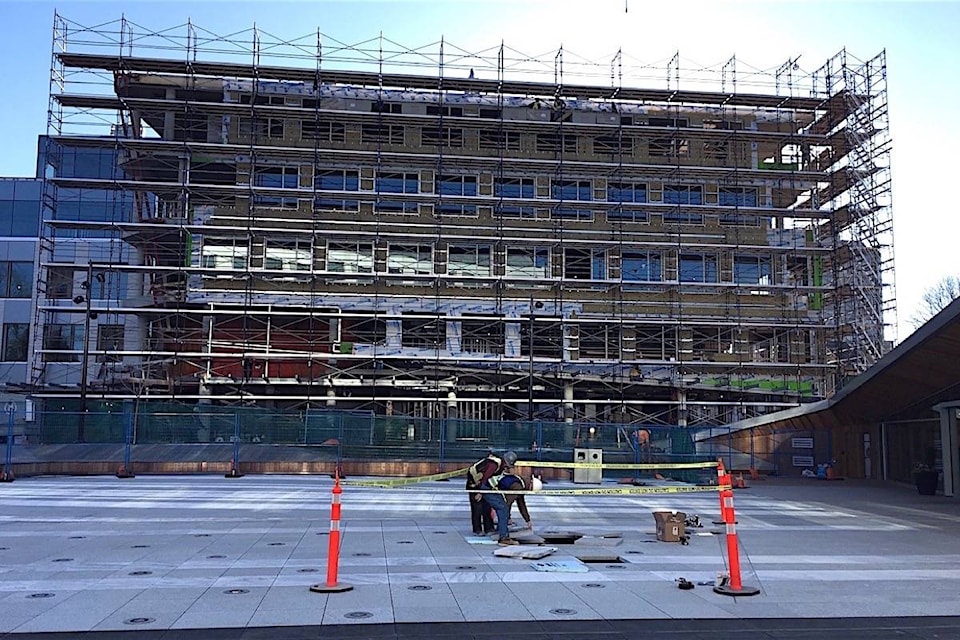B.C.91¬„¡ƒ ”∆µôs worker compensation system pulled itself out of an unfunded liability onto a solid financial footing after changes made in 2002, and now employers, injured workers and their families are waiting for the next overhaul.
WorkSafeBC is responsible for 45,000 sick or injured workers and more than 4,000 spouses and children who depend on pension payments, and administers an insurance system paid into by 238,000 . Workers give up their right to sue employers for negligence in exchange for no-fault compensation funded by employers and administered independently, an arrangement created in Ontario a century ago known as the 91¬„¡ƒ ”∆µúhistoric compromise.91¬„¡ƒ ”∆µù
Among the terms for B.C. Green Party support of the minority NDP government was 91¬„¡ƒ ”∆µúimproving fairness for workers and ensuring balance in workplaces,91¬„¡ƒ ”∆µù and Labour Minister Harry Bains appointed retired labour lawyer Janet Patterson in April to conduct the review.
According to a consultant report prepared for the province in December, WorkSafeBC retains compensation rates 91¬„¡ƒ ”∆µúamong the highest levels among workers91¬„¡ƒ ”∆µô compensation systems.91¬„¡ƒ ”∆µù
Public hearings around the province on proposed changes have been completed, and final submissions from business and other groups are being submitted for a report to be released by the end of September.
In a joint submission by 46 employer groups, employers questioned terms of the review including a 91¬„¡ƒ ”∆µúgender-based analysis91¬„¡ƒ ”∆µù and moving to a 91¬„¡ƒ ”∆µúworker-centric service delivery model.91¬„¡ƒ ”∆µù The review91¬„¡ƒ ”∆µôs terms of reference didn91¬„¡ƒ ”∆µôt give them enough information to make recommendations, the employers said in their submission.
The employers noted that Patterson advised them that her review was not directed to examine costs of changes.
91¬„¡ƒ ”∆µúWe submit that the cost of funding the B.C. workers91¬„¡ƒ ”∆µô compensation system is an intrinsic and integral aspect of the 91¬„¡ƒ ”∆µòhistoric compromise91¬„¡ƒ ”∆µô which is the genesis of that system, that a balance must be drawn between the level of benefit entitlement for disabled workers and the cost to employers to fund the system, and that this balancing of interests is predicated on disabled workers receiving fair (but not full) protection against economic loss,91¬„¡ƒ ”∆µù the employers wrote.
RELATED:
RELATED:
In his , consultant Terrance Bogyo warned that turning back the clock on worker compensation is not an option, after employer premiums were increased and benefits restricted in 2002. Among those reforms was one restricting inflation indexation of pensions and cash awards to workers and survivors, reducing payouts by $584 million between 2002 and 2017.
Bogyo proposed a series of options for WorkSafeBC changes, including:
91¬„¡ƒ ”∆µ¢ Increase maximum insurable earnings to $100,000 per year
91¬„¡ƒ ”∆µ¢ Increase the presumed age of retirement from 65 to 70
91¬„¡ƒ ”∆µ¢ Assuming maximum earnings in the event of a work-related death
91¬„¡ƒ ”∆µ¢ Alter the current inflation cap of Consumer Price Index minus one per cent
B.C. businesses have shouldered the province91¬„¡ƒ ”∆µôs new employer health tax this year, and many are still paying half of the Medical Services Plan premiums the new payroll tax is replacing as of 2020.
tfletcher@blackpress.ca
Like us on and follow us on .



